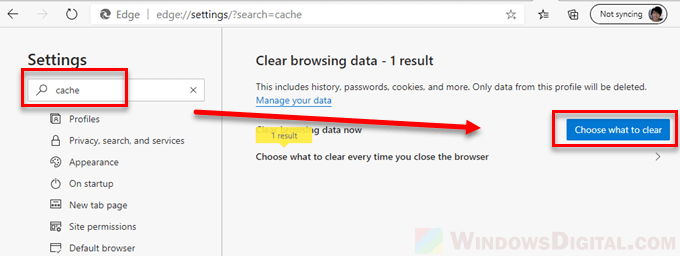
When you surf the internet, your browser creates cache files to speed up the sites you frequent. Tip: If you’re facing problems with your web browser, flushing out the DNS cache can help. Once the process is finished, you’ll see a message that reads ‘Successfully flushed the DNS Resolver Cache’. Step 2: Type the command mentioned below and press Enter. Select ‘Run as administrator’ to open the command prompt with admin rights. Step 1: Open the Start menu and type in cmd. You can delete the DNS cache in a few simple steps mentioned below. These files can pile up over time eat up valuable storage space in the form of a DNS cache. Clear DNS Cache #ĭNS cache contains information about previous DNS lookups on your PC or web browser. This way, all location cache data stored on your PC will be deleted. Now on your right, scroll down to find ‘Location history’ and tap on the Clear button.

Step 2: In the Privacy section, go to Location under ‘App permission’ on your left.

Step 1: Use the Ctrl+I shortcut to open Settings. You can clear the location cache stored on your Windows 10 PC right from the settings menu. Wait for the process to finish, and the Windows Store will launch automatically.Ĭlearing the Windows Store cache will also help if you’re having trouble while downloading apps and games. To clear the Windows Store cache, press Ctrl+R to open the Run dialog. Thankfully, you can clear that cache to free up storage space. Over time this can take up space on your PC. The Windows Store on your PC also creates cache files whenever you download or update apps. Wait for the process to finish, and it will delete all the selected files. Note: This process may take a while, so try not to use anything else on your computer. Then click on the ‘Delete Files’ button when prompted. Step 4: Make the appropriate selection again and press OK. Step 3: Now, the app will calculate how much space will be freed up after deleting selected files. After that, click on the ‘Clean up system files’ button.


Step 2: In the Disk Cleanup window that appears, under ‘Files to remove’, make the appropriate selection of files that you’d like to remove. Step 1: Click Start, type disk cleanup in the Windows Search, and press Enter to open the Disk Cleanup app. That can find and delete temporary files clogging up the storage space. Windows 10 comes with a built-in Disk Cleanup tool. So without any further ado, let’s get started. We’ll cover how to remove all kinds of cache files stored on your Windows 10 PC in this guide. Rest assured, deleting cache data on Windows 10 is a completely safe affair and won’t interfere with your files or settings. Clearing cache files can also help troubleshoot any performance issues, free up disk space, and improve the overall performance of your PC.


 0 kommentar(er)
0 kommentar(er)
